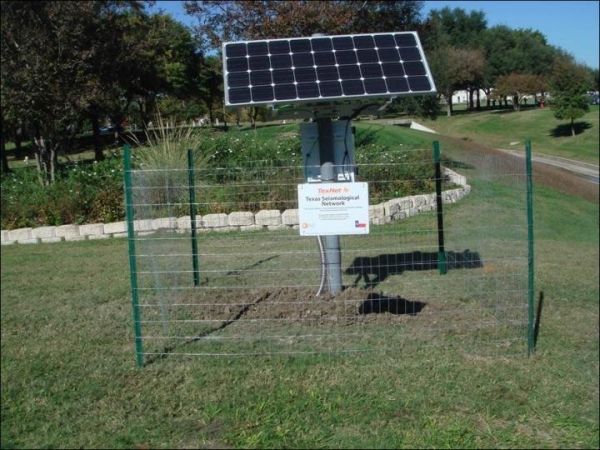A study led by The University of Texas at Austin has found that the majority of faults underlying the Fort Worth Basin are as sensitive to changes in stress that could cause them to slip as those that have generated earthquakes in recent years.
Researchers with UT’s Bureau of Economic Geology, Stanford University and Southern Methodist University have created a comprehensive map of more than 250 faults totaling more than 1,800 miles in combined length, some of which extend under highly populated areas in the Dallas-Fort Worth region. The study, published July 23 in the Bulletin of the Seismological Society of America, found that the faults are relatively stable if left undisturbed, but that wastewater injection, a practice common during oil and gas operations, significantly increases the potential of the faults to slip if not managed properly.
“That means the whole system of faults is sensitive,” said lead author Peter Hennings, a bureau research scientist and the principal investigator at the Center for Integrated Seismicity Research (CISR).
The Fort Worth Basin saw a major increase in seismic activity from 2008 to 2015 as oil and gas operations increased, but a significant reduction in earthquakes the last four years as injection has slowed. Hennings said that people should be aware that the nature of the fault system means that many areas are susceptible to potentially hosting earthquakes, and that an upturn in oil and gas production that results in increased deep wastewater disposal could also bring an upturn in quakes if not properly managed.
Read more at: The University of Texas at Austin
A new study led by The University of Texas at Austin shows that many of the faults underlying the Dallas-Fort Worth could be susceptible to slipping and causing earthquakes if deepwater injection in the area is not properly managed. TexNet seismometers placed throughout the state, like this one in Dallas, monitor seismic activity across Texas. Data from the TexNet network was used in the study. (Photo Credit: The University of Texas at Austin/Bureau of Economic Geology)


